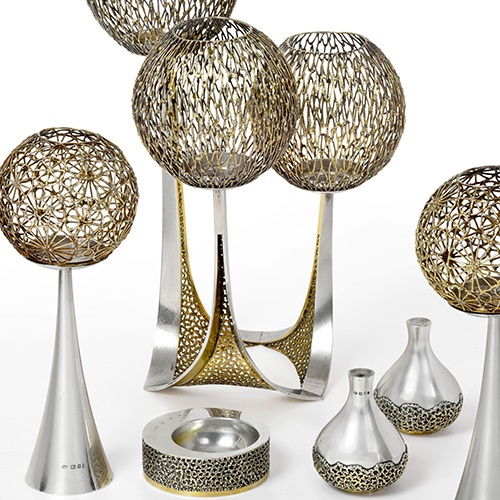The Jewellery, Watches and Silver Sale on 14th September will include a good range of some of the more unusual gemstones, which only appear occasionally at auction. Thus, we are taking the opportunity to explore the properties and merits of some of these more elusive gemstones, which might not be as familiar to buyers.
News & Insights
Gemstones: A Little Less Ordinary

DEMANTOID GARNET
A Demantoid Garnet and Diamond Three Stone Ring, circa 1930 (estimate: £250-350 plus buyer’s premium)
Many people think of dark red hues when they think of garnet, so why is this one a vivid green colour?
Unlike most other gemstones, garnet is not one species but rather an extended family of gemstones that have overlapping properties.
The present example is a demantoid garnet, which is the most valuable variety of andradite garnet, and the bright green colour is caused by the presence of chromium. Andradite garnet has a high dispersion, which means it has a more visible lustre or sparkle than most garnets, giving a brighter look to the stone. Demantoid garnets may also display characteristic hair-like inclusions known as horsetails, which are fun to try to spot. This variety of garnets have been sourced from the Urals in Russia, as well as northern Italy, Kenya and Zaire.

CHRYSOBERYL
A Late 19th Century Garnet and Chrysoberyl Brooch/Pendant (estimate: £300-500 plus buyer’s premium)
Another gemstone which can be found in the Urals, as well as in other places such as Sri Lanka, Tanzania, Zimbabwe, Brazil and China, is chrysoberyl.
Early examples can sometimes be found in 18th and 19th century Portuguese jewellery, usually crafted into rings or buckles.
Chrysoberyl can occur in a variety of colours from green, to yellow and brown, and this pale-yellow version is sometimes called chrysolite. It can also present as the very rare stone alexandrite, which exhibits colour-change effects, or as cabochon ‘cat’s-eye’ stones.

YELLOW SAPPHIRE
An 18 Carat White Gold Sapphire and Diamond Three Stone Ring (estimate: £300-500 plus buyer’s premium)
You may be thinking “sapphire is not that rare”, and indeed sapphire is arguably one of the most prolific of the valuable gemstones; however, non-blue sapphires are still fairly unusual in jewellery. The light-yellow sapphire in the present example is of such a hue that the initial instinct would be to assume it is from a completely different gemstone family. Luckily, as a sapphire, it has the benefits of the superior hardness of the stone, as well as being relatively easy to care for.

PARAÍBA TOURMALINE
An 18 Carat Gold Paraíba Tourmaline Ring (estimate: £200-300 plus buyer’s premium)
Whilst tourmaline is a gemstone that regularly goes under the hammer, less common are paraíba tourmalines, so-called as they were originally mined in the state of the same name in Brazil.
It is recognisable by its distinctive vivid bright blue or green colour, which is caused by high concentrations of copper. Discovered in the 1980s after several years of exploration, this stone appears rarely on the secondary market.

KUNZITE
A Kunzite and Diamond Pendant (estimate: £200-300 plus buyer’s premium)
Part of the spodumene family, kunzite is coloured by manganese, which gives it a distinctive lilac-pink colour. It is named after the gemmologist, G. F. Kunz, who first described it in 1902. Usually sourced in Brazil, it also occurs in Madagascar, Burma, the USA, Canada and Sweden.

LABRADORITE
An 18 Carat Gold Labradorite and Diamond Pendant on a Labradorite Bead Necklace (estimate: £100-150 plus buyer’s premium)
Labradorite is a gemstone that displays many colours. A type of feldspar, it is named for the locality where it was first discovered – Labrador in Canada, but it can also be found in Norway and Finland. It is characterised by the play of colour or schiller (the twinkling from mineral platelets inside the gemstone), that gives it such great appeal in jewellery.

YELLOW BERYL
A Yellow Beryl and Diamond Cluster Ring (estimate: £400-600 plus buyer’s premium)
Most people will have heard of emeralds, but fewer will know that emerald is just one variety of the Beryl family. Beryl is another gemstone that occurs in several colours; blue is normally known as aquamarine, pink is known as morganite, and yellow beryl is known as heliodor. It is another gemstone that can be found in the Urals, and other localities including Brazil, Madagascar, Namibia and Ukraine.

BLACK DIAMOND
A Diamond Eternity Ring (estimate: £800-1,200 plus buyer’s premium)
Finally, whilst white remains the dominant diamond colour, diamonds can occur in many other colours, including black. Black diamonds can either be created artificially by heating or irradiating, or they can occur naturally as a polycrystalline diamond material, once known as carbonados.
Black diamonds stand apart from other black gemstones as they have the coveted adamantine lustre of diamonds.
They can be used to create contrast or dramatic effect in jewellery designs, as seen in present eternity ring, which is set with both white (or colourless) and black diamonds.
< Back to News

10th January 2026, 09:30
Plan your visit to our Leyburn Head Office and Salerooms, or the Harrogate Office
Get your antiques and collectables valued by our team of specialists.









